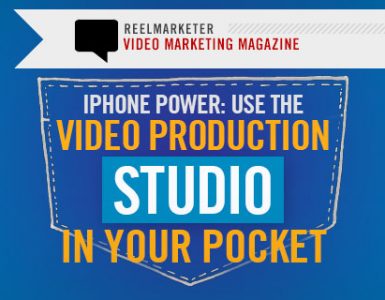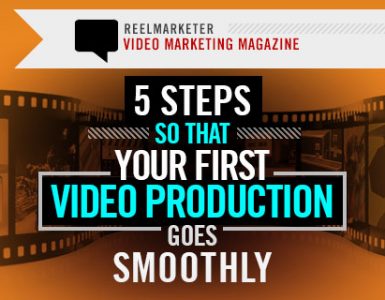About 15 years ago when I first became a corporate video producer – back in the days of Betacam SPs and linear editing systems (old school analogue video production) – we used voiceovers in almost all of the productions we created. If an interviewee wasn’t overly articulate or failed to use a noun that would have made the subject more comprehensible (and I failed to notice until it was too late), there was a simple solution: Grab a half-sound bite to put a face on the screen and give the piece credibility, then explain the rest of the point in a narrative track.

Among its other advantages, this method offered an opportunity to mask any subject behind good writing. Besides, with linear editing, the numbers of cuts in A-roll had to be contained, particularly in the absence of much B-roll to use as a cover. Transition devices were limited to cuts that abutted images and to dissolves, and the latter required separate machines.
The Modern Promotional Video
Times have changed, and so has the style of promotional video presentations.
The digital conquest offers infinite ways to showcase material that have pushed aside a reliance on narrators.
The range of interesting transition devices today can make frequent cuts in sound bites more appearance-friendly.

Well-designed motion graphics can be created to roll across partial or full screens, explaining in a few words any concepts that sound bites leave unclear. Further, in this age of user-generated-content-citizen-journalism, a good deal of respect is accorded to the voice of the everyday person as compared to the reporter-type storyteller, whose actual objectivity, the public has seen on occasion, can be skewed by the bent of the publication printing the story.
In short, that objective assertion of a narrator currently is perceived in many instances as much less convincing than the voices of subjective interviewees offering their thoughts.
Interviewing Corporate Staff vs. Actors
Producing a corporate video that does not use narration offers challenges at each interview.
Company speakers are not trained actors. Their natural speech patterns are generally replete with “um”s and “you know”s and “like I said”s. Their cadences, especially when a camera is turned in their directions, are often somewhat monotone and may bear little resemblance to their more colorful tones of voice that go into gear when the camera goes into off-mode.
The job of the producer asking questions is also double-layered: In addition to probing for substantive responses that go to the heart of points to be addressed in the video, the producer needs to listen to each answer through the ears of how the video will later be cut.
He or she must be aware when interviewees make sentences that contain vague pronouns, for instance, ensuring that such thoughts are restated in ways that will make them useable in the production.

A key benefit of using corporate employees as thought leaders rather than having narrators tell the company story is that frequently the former have real passion for their work, their offices, the products or services they are involved in offering, and/or their colleagues. In these cases, it is vital that a producer tap into that passion, then draw it out in the responses to interview questions. The expression of these sentiments by unscripted respondents can be very impactful.
And yet, good video is customized video.
In some cases, narration continues to be an effective avenue for presentation of material. For example, in retelling a history of an old company for which there are no speakers with knowledge of key events that the video would like to convey, a voiceover relaying some details and giving flavor to the larger piece might be a sound choice.
Or getting across the significant information in how-to videos, i.e., each step along the process, might call for a straightforward narrator.
How to Decided to Use a Narrator, or Not
In deciding whether to use a narrator or not, a few questions that might be helpful include:
- Who is the ultimate audience, and what will their reactions be to the different approaches?
- What category of video is involved, and which alternative makes the most sense in terms of getting across the point for which the production is being created?
- If a decision is made to use a narrator, what type of voice (e.g., male/female, young/old) would be most appealing to the intended audience? Whatever the determination regarding this point, a narrator with professional voiceover training will provide a significantly better read, ensuring good and even pronunciation, than someone without experience or lessons.
- If a decision is made not to use a narrator, is the interviewer prepared to ensure that responses are stated in ways that can be used in the final product?

In short, while it is stylish to produce corporate videos without narrations, these pieces present challenges down the line in post-production that can often be averted only with a lot of preparation in pre-production.
Further, there are no hard and fast rules in this arena, and some types of videos benefit from voiceovers rather than or in addition to interviewee soundbites!






I’ve always thought the need for VO depends on the type of production. In some disciplines, I think voice overs are absolutely necessary, as they can guide a production and are written before hand to ensure smooth speaking and what not. I like this article regardless, very insightful.
Hi Rick, I totally agree. Voice over can be used in so many video types. A solid voice over can help round-out a informational video or promotional video and fill-in the ‘gaps’ in a person’s interview, if needed. Also, a concise script with the appropriate voice can really lend professionalism to a production. Thanks for sharing!